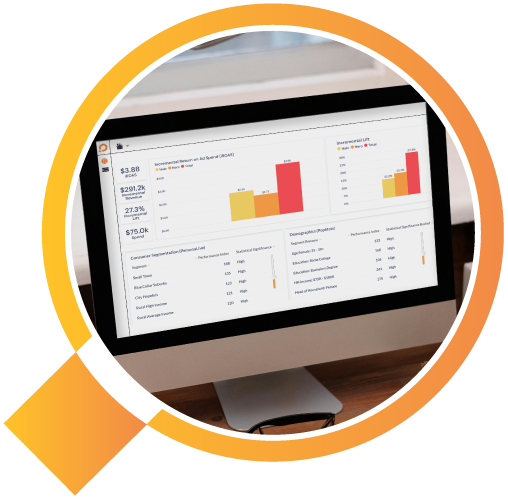
Why Every Brand Needs an OmniCommerce Performance Platform

Why Every Brand Needs an OmniCommerce Performance Platform
 By Brian Pozesky
By Brian PozeskyMarketing got complicated—and expensive. Channels multiplied, cookies crumbled, and “good ROAS” on one dashboard contradicted “bad ROAS” on another.
Enter the Omni-Commerce Performance Platform: one system that connects media, identity, and sales (online + in-store) to prove what really drives incremental revenue—and move more budget there, faster.
Why this matters right now
The ad market has never been bigger, and retail/commerce media is becoming a headline growth engine—on track to rival or surpass TV ad revenue globally as early as 2025–2026. Brands are flocking to channels with first-party data and verifiable outcomes.
Marketers cite closed-loop measurement as a top reason for shifting spend: the ability to tie exposure to a verified sale—not just a click.
New IAB/MRC retail media measurement guidelines are standardizing the basics (impressions, viewability, methodology) so buyers can compare apples to apples.
What is an OmniCommerce Performance Platform?
Think of it as the performance layer that sits across your retail media, paid media, POS, and eCommerce stacks—connecting data, proving incremental lift, forecasting outcomes, and optimizing budgets automatically.
On your new site, you capture it simply: “Measure, Optimize & Forecast”—with incrementality at the core.

The 5 biggest benefits for advertisers
1) Closed-loop truth (not proxy metrics)
Directly connect ad exposure to verified sales (in-store + eCom) using privacy-safe matching. This replaces click-based guesswork with outcome data you can defend in the boardroom.
2) Standardized, audit-ready measurement
Align KPIs and methods to IAB/MRC guidelines so results are comparable across networks and formats. This is how you de-risk cross-channel planning and partner selection.
3) Incrementality over attribution
Move from “what happened” to “what changed because we spent.” Geo holdouts and lift tests quantify true delta, so you fund what actually creates new revenue.
4) One performance story across every channel
Unify retail media, paid social/search, CTV, and more into one source of truth—so you can reallocate to high-return pockets in real time, not at QBRs.
5) Future-proofed by first-party data
As identifiers evolve, first-party partnerships and clean measurement win. Buyers and agencies are explicitly prioritizing first-party data strategies in 2025.
How it works: The Fastest Path From Spend to Incremental Growth

What “optimized investment” looks like in practice
Budget reallocation by iROAS: Shift 10–30% of spend toward placements, audiences, and networks with proven incremental lift—not just the best click-through. (Mechanism: lift testing + portfolio optimization.)
Cross-network comparability: Evaluate partners with common definitions for impression quality, viewability, and sales outcomes. (Mechanism: IAB/MRC-aligned KPIs.)
Faster planning cycles: Use historicals + current lift to forecast scenarios before you spend (e.g., “+5% to RMN A vs. CTV audience X”).
First-party advantage: Build durable measurement with retailer and publisher data relationships that close the loop, even as third-party signals fade.
Where Pēq fits
Pēq brings this together in one platform: connect data, calibrate with incrementality, forecast outcomes, and optimize the media portfolio—so every next dollar goes where it will drive verified, incremental growth.
That’s exactly what your new site promises, with “incremental ROAS” and omni-channel optimization front and center.
Quick checklist: Are you ready for omni-commerce performance?
- Can you trace exposure → sale across retail media and paid channels? (If not, start with closed-loop integrations.
- Do your partners report to IAB/MRC standards so KPIs are comparable?
- Are you running incrementality tests (geo holdouts/lift) at least quarterly?
- Can you forecast budget scenarios and update the plan weekly?
👉 Get your Free Incrementality Audit

